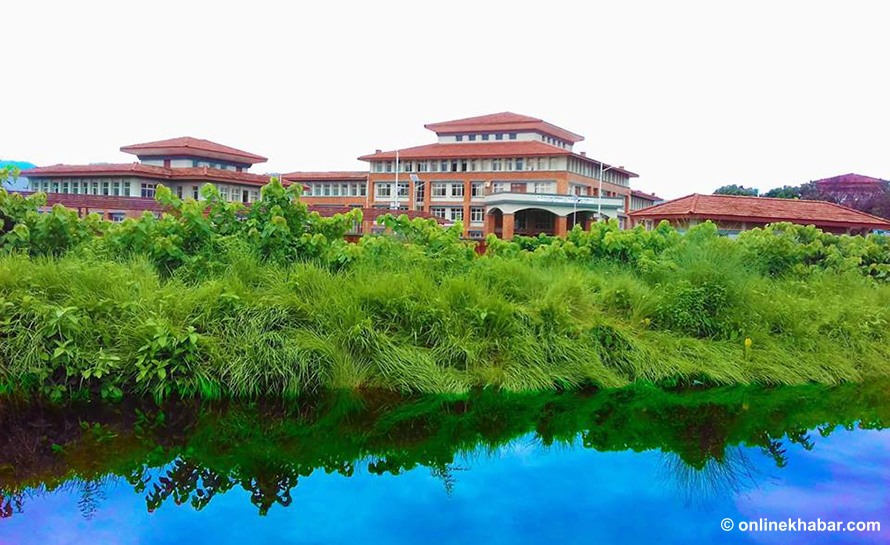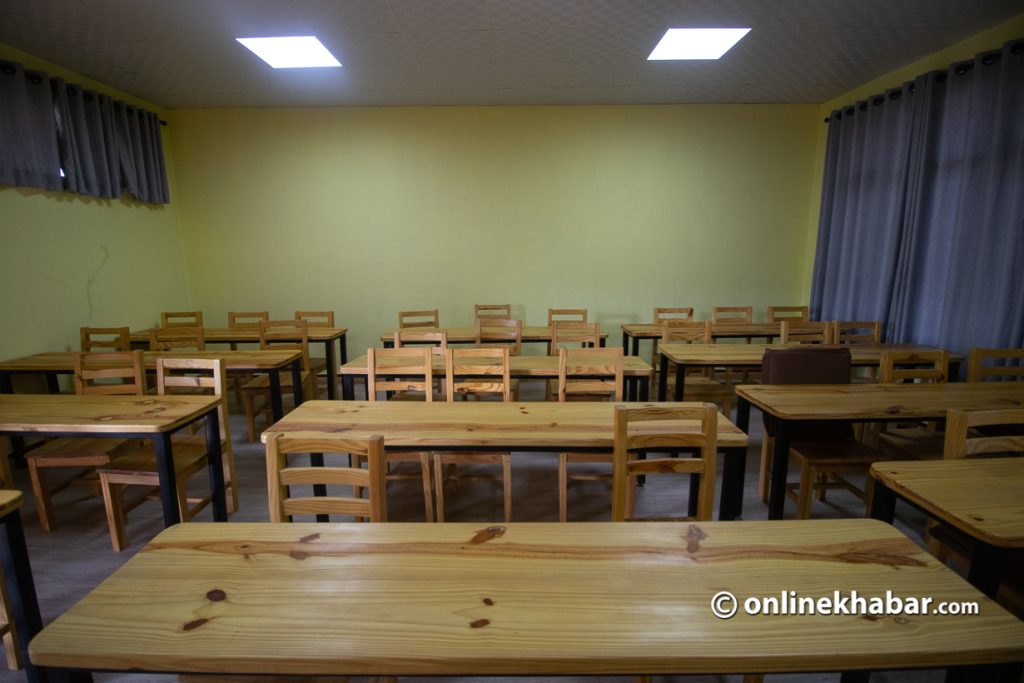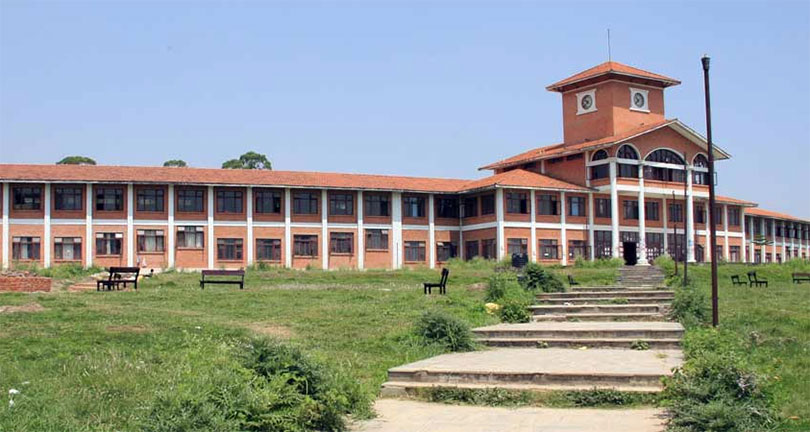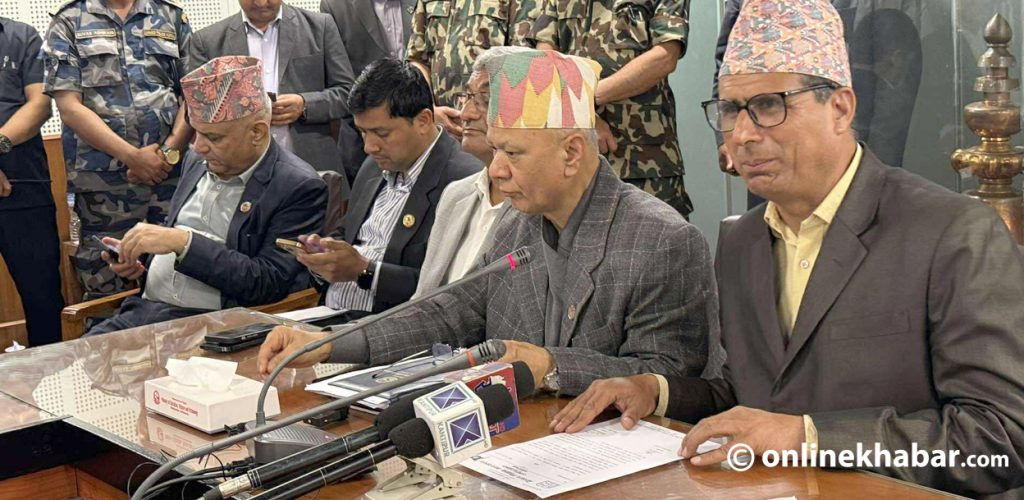
Recently, the number of students is drastically decreasing in almost all Nepali universities of Nepal. The competition for admission to any programme is not as tough as it used to be. Even the country’s largest and oldest university, Tribhuvan University, is facing the same problem.
Alongside the TU, other Nepali universities are also struggling to get students’ applications for enrolment. Some of them have hardly fulfilled the required number of students for allocated seats to run the classes.
But why is the crisis getting momentum now?
The falling numbers

The number of students in constituent and affiliated colleges of Tribhuvan University, the oldest and biggest of Nepali universities, has decreased drastically.
Central Food Technology Campus, Hattisar, Dharan is the only food technology campus of TU running bachelor’s programmes such as BTech in Food and BSc Nutrition and Dietetics. There are 48 student quotas for BTech in Food, 30 for BSc Nutrition and Dietetics, and 30 for BSc CSIT and BIT, respectively. Assistant campus chief Babita Adhikari says that although the quota of students in these educational programmes has been completed, the number of competitors has decreased.
A total of 288 seats have been allocated in the BTech in Food programme. Subtract 48 seats in the Dharan campus, the rest 240 are divided among 10 affiliated colleges (24 each). The TU Institute of Technology and Studies conducts the admission test in Dharan and Kathmandu for admission. Adhikari informs 126 students participated in the entrance exam in Dharan this time.
“In the past, there were more than 500 students competing for these 48 seats,” she says.
Meanwhile, at each affiliated college, only five to 10 students are enrolled.
In other subjects like biology, physics and geology, the number of applicants has dropped. A total of 180 seats have been allocated for these subjects, but only 40 per cent of students have enrolled.
“Due to the FSU elections, the TU has already stopped the admission process,” says Adhikari. “If the varsity does not open the admission again, the colleges have to run the classes with only 40 per cent of the students.”
Binil Aryal, the dean of the TU Institute of Science and Technology, says the institute has revised the curriculum and added various programmes to attract students.
“The number of students is increasing in technical subjects like BSc CSIT, and BIT,” says Aryal. He further informs that this year, there were 5,700 applicants for BScCSIT and 2,100 applicants for BIT, an increase from 5,500 and 800 applications last year respectively.
While the number of students is increasing in these two subjects, the number of students has decreased in other subjects.
All streams affected

The number of students has decreased at Tri-Chandra Campus as well. According to the Assistant Campus Chief Tri-Chandra Campus, Bal Krishna Poudel, the dropout rate has increased among the enrollees.
According to Poudel, the college has 30 seats in microbiology and 90 in chemistry at the master’s level, but the number of students in these courses still falls short.
Last year, only 73 students were enrolled in chemistry while in engineering and geology, the number of applicants for the entrance exam was less than the total number of seats available. “This year as well, the number of applicants has decreased,” he says.
Similarly, the number of students has been decreasing in the humanities and social science streams in Nepali universities, in the last few years. Poudel says the number of students is decreasing in major subjects like history, geology, Nepali, and population.
The number of students is also decreasing at the TU Institute of Agriculture and Animal Science (IAAS). According to Bhargab Dhital, the dean, there are four constituent and five affiliated colleges under the institute, but none has as many students as they can accommodate.
In the management stream as well, there appears to have been a decrease in the number of students, but official data regarding this has not yet been released. Yet, TU Management Dean Dilli Ram Sharma says the number of applicants has decreased compared to last year.
This year, the university conducted the CMAT, an entrance exam for the management stream of bachelor’s level, twice as it could not get sufficient students in one go. Officials say the number of students applying for an admission is around 2,000 less than that of the past year even after two chances.
Engineering institutes in Nepali universities have also seen a decline in the number of students. “The quotas are being fulfilled but the ratio of competition among the applicants has declined significantly,” says Indra Prasad Acharya, the principal of Pulchowk Engineering Campus under the TU Institute of Engineering.
Eastern Regional Campus of the Institute of Engineering has seven programmes. A total of 528 students enrol in all these subjects, but over 50 seats are vacant, says campus chief Om Prakash Dhakal.
“The campus has opened applications for vacant seats, but looking at the current situation, quotas of some subjects might go vacant.”
The trouble with newer universities

Meanwhile, most other Nepali universities do not have any different story from the TU. Here, we are presenting the case of Agriculture and Forestry University, Chitwan, as the tip of the iceberg.
The university offers programmes in agriculture, animal science, veterinary science and fishery, and forestry. The students are decreasing in all these streams, says the deans of concerned departments.
Jay Prakash Dutta, the dean of the agriculture stream of the university, says that the number of students has decreased significantly.
There are 54 seats at each constituent college and 162 seats at the central campus, making it a total of 915. For admission, in earlier years, there used to be over 4,000 applicants, but last year, there were only 2,700 applicants, he says. This year, only 1,700 people appeared in the entrance exam.
Among them, only 705 passed the examinations and only around 500 came for admission. All seats at the central college have been filled, but the ratio of admissions at affiliated colleges is around 10 per cent, according to him.
The number of students is also notably declining in the faculty of animal science, veterinary science and fishery, says Dean Hom Bahadur Basnet. In earlier years, 50 people used to compete for one seat, but now only eight people contest for a seat.
This year, 425 students competed for 50 seats in veterinary science and 21 seats in the fishery. Among them, only 250 students passed.
Major factors behind
Several officials of Nepali universities say there are multiple factors behind the decline in the number of students.
They say the first factor is the students’ attraction towards studying abroad.
According to the No Objection Certificate (NOC) Section of the Ministry of Education, Science and Technology, 44,812 students received NOC in 2021 whereas the number increased to 121,499 in 2022.
“The government should work on a policy that would attract students to Nepali universities,” says Binil Aryal, the dean of the Institute of Science and Technology. According to him, studies show that the growing interest towards studying abroad and the opportunity to earn money as a student on foreign soil, has declined the number of students in Nepali universities.
He also says that students these days have full of options. They do not want to be stuck in a single country but want to be a global citizen.
Amma Raj Joshi, the vice-chancellor of Far-Western University, says that the poor economic parameters of the country are compelling the students to go abroad, leaving Nepali universities deserted.
“The failure of the TU to conduct timely exams and publish results is also declining the number of students. If they resolve these problems, the number of students may increase,” says Bilash Luitel, the chief of Birat Multiple College, Biratnagar.
The lack of research by the government has created such a situation in universities, says Bal Ram Bhatta, a dean of the Agriculture and Forestry University.
“Before approving a subject for any constituent or affiliated college, the university should do proper research. Otherwise, the Nepali universities should also merge like banks these days.”
This story was translated from the original Nepali version and edited for clarity and length.


























